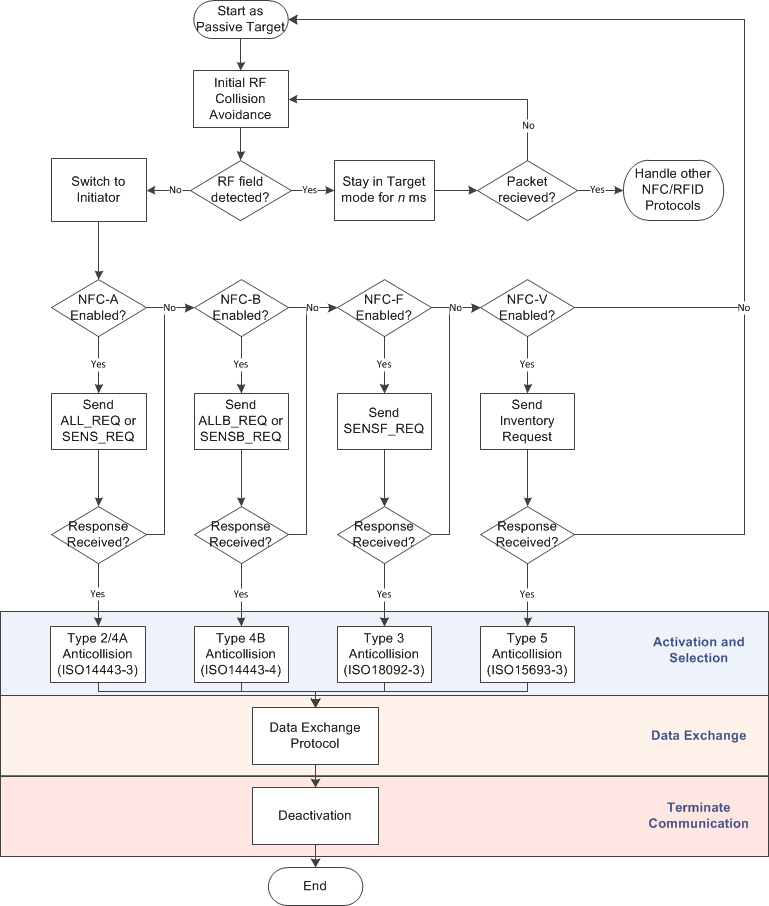SLOA227B October 2015 – March 2019 TRF7964A , TRF7964A , TRF7970A , TRF7970A
-
NFC/HF RFID reader/writer using the TRF7970A
- Trademarks
- 1 Terms, Definitions, and Symbols
- 2 Introduction
- 3 Initial RF Collision
- 4 TRF7970A Register Settings
- 5 Reader/Writer Mode
- 6 Hardware Description
- 7 Reader/Writer Firmware Example
- 8 Quick Start Guide
- 9 Operational Overview
- 10 Reader/Writer Interoperability Results
- 11 Conclusion
- 12 References
- Revision History
5 Reader/Writer Mode
The TRF7970A supports reader/writer mode for NFC-A (Type 2/4A), NFC-B (Type 4B), NFC-F (Type 3), and NFC-V (Type 5) tag platforms. Only one technology can be activated at a time, requiring the reader/writer mode to poll through each technology individually to detect NFC tags. The way this is handled in the example firmware is illustrated by the flow diagram presented in Figure 7.
After the initial RF collision is completed and the RF field is turned on, there is a guard time before polling for the first technology. The guard time is a specified period of time where the RF field is on, but is unmodulated. The guard time allows for a tag platform to have enough time to be ready to reply to commands that are issued. The guard time requirements vary with each technology, and therefore the ISO specifications for an individual technology should be referenced to find out more information about the guard time for that technology.
For the TRF7970A, there must be a 0x20 or 0x21 written to the Chip Status Control (0x00) register, and the appropriate technology setup for the ISO Control (0x01) register. The example firmware provided implements longer guard times than the minimum required by the specifications for NFC-A and NFC-B. This is done to improve the performance of systems that rely on an RF field to power up additional devices.
The flow diagram for example firmware in Figure 7 does not explicitly show the guard times, but they occur before sending the initial polling command for each technology. For example, the guard time before sending an ALL_REQ or SENS_REQ is set to be 5 ms in the firmware, so if the firmware confirms that NFC-A is enabled, the firmware then turns on the RF field and waits for 5 ms before issuing the ALL_REQ or SENS_REQ command.
The firmware has been structured based on the NFC Forum Activity 1.0 specification, and does not include any anticollision processes for detecting and selecting multiple tags of the same technology. This is equivalent to having the device connection limit set to zero.
It is possible to implement such processes with the TRF7970A by modifying the provided example firmware to support anticollision processes for the different technologies. The firmware has been designed to promote flexibility for modifications as well as custom applications, and the existing APIs can be leveraged to add anticollision functionality for each technology.
 Figure 7. TRF7970A Reader/Writer Flow Diagram
Figure 7. TRF7970A Reader/Writer Flow Diagram